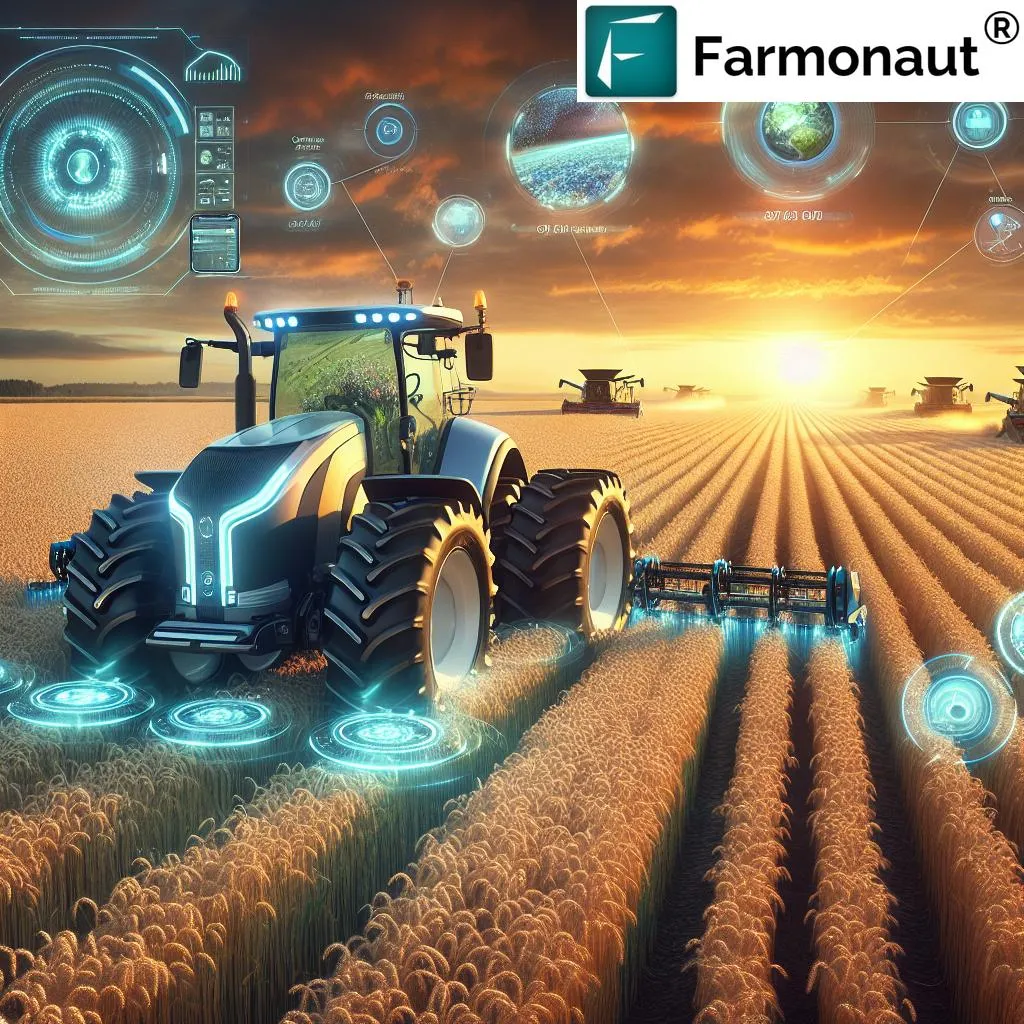As we approach 2026, the agricultural machinery sector is poised for a significant transformation, with smart technology and precision farming taking center stage. A recent industry report reveals that by 2026, 70% of new agricultural machines will integrate smart technology, a trend that is set to redefine farming practices worldwide. This shift is not only enhancing efficiency and productivity but also addressing critical challenges such as labor shortages and environmental sustainability.
The global agricultural machinery market is projected to exceed $265 billion by 2026, driven largely by advancements in automation and seed innovations. This growth is a testament to the increasing demand for sophisticated, connected, and sustainable solutions in modern agriculture. Agricultural machinery manufacturers are at the forefront of this evolution, transitioning from producing basic equipment to developing advanced, precision-driven tools that cater to the complex needs of contemporary farming.
One of the most notable trends in this sector is the integration of precision farming technologies. These technologies leverage artificial intelligence (AI), the Internet of Things (IoT), and sensor-based systems to create smart machinery that optimizes crop management and resource utilization. For instance, precision tractors, seeders, and sprayers now use advanced sensors and software to apply seeds, water, and agrochemicals at variable rates based on real-time soil and crop health data. This approach minimizes waste and maximizes yield, making farming more efficient and sustainable.
Autonomous equipment is another key innovation reshaping the agricultural landscape. Autonomous tractors and harvesters, equipped with AI and obstacle-detection capabilities, can perform planting, spraying, and harvesting tasks with minimal human intervention. This development is particularly crucial in regions facing labor shortages, as it enables continuous operation during critical planting and harvesting windows. Additionally, remote machinery management and predictive maintenance systems allow farm managers to track, calibrate, and monitor machinery fleets in real-time, further enhancing operational efficiency.
The drive for sustainability is also a significant factor in the evolution of agricultural machinery. Manufacturers are increasingly focusing on designing equipment that reduces environmental impact. Electric and hybrid tractors, biodegradable and recyclable components, and low-emission implements are just a few examples of sustainable innovations in the sector. These advancements not only align with global climate goals but also future-proof machinery against regulatory changes and shifting market preferences.
Collaboration between seed manufacturers and equipment producers is another critical aspect of this transformation. Seed manufacturers are developing genetically enhanced, high-yield, and climate-resilient seeds that complement the capabilities of advanced machinery. This synergy between seed and equipment innovations is driving a new wave of integrated, data-driven farm management solutions. For example, real-time satellite monitoring tools like Farmonaut provide valuable insights that help match seed and machinery recommendations with specific soil and weather conditions.
The shift towards Industry 4.0 principles is further revolutionizing the agricultural machinery sector. Smart factories, characterized by automation, digital twins, and advanced data analytics, are enabling faster, higher-quality, and more flexible manufacturing processes. 3D printing is also playing a role in rapid prototyping and spare parts production, reducing lead times and costs for both manufacturers and farmers. Supply chain visibility, facilitated by advanced data platforms, ensures transparency in inventory, logistics, and raw material sourcing, allowing firms to respond more effectively to market demands.
In conclusion, the agricultural machinery sector is undergoing a profound transformation driven by smart technology, precision farming, and sustainability. As we move towards 2026, the integration of AI, IoT, and autonomous systems, along with collaborative innovations between seed and equipment manufacturers, will continue to enhance efficiency, productivity, and environmental stewardship in agriculture. This evolution is not only reshaping the sector but also paving the way for a more sustainable and resilient future for global agriculture.

